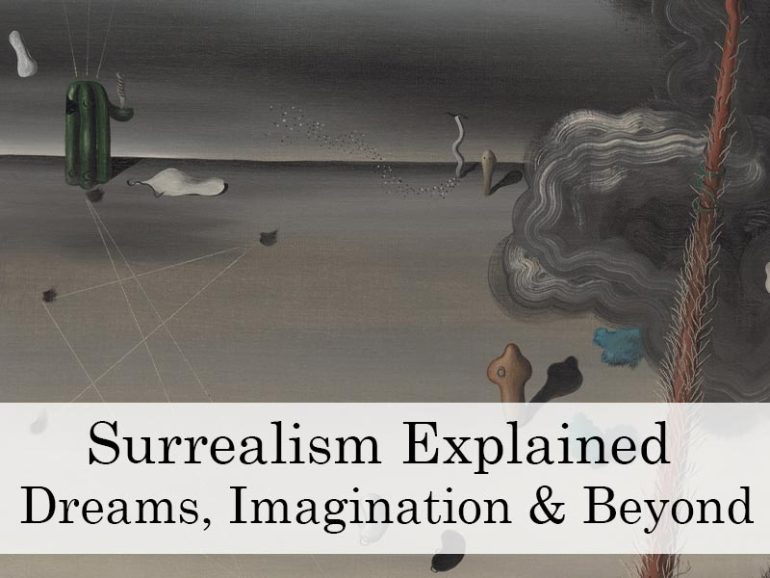Surrealism, an art movement born in the early 20th century, sought to unlock the unconscious mind and explore the world of dreams. Heavily influenced by psychoanalysis and the writings of Sigmund Freud, surrealist artists created fantastical works that blurred the boundaries between reality and imagination. Their art invited viewers to question logic, embrace the bizarre, and delve into the subconscious.
What Is Surrealism?
Surrealism originated in the 1920s as a literary and artistic movement led by André Breton, whose Surrealist Manifesto outlined its goals. The movement was rooted in:
- Exploring the Unconscious: Artists used techniques like automatic drawing to bypass rational thought.
- Dream Imagery: Their works often depicted strange, dreamlike scenes.
- Juxtapositions: Surrealist art combined unrelated objects to create unexpected meanings.
- Subversion of Reality: Surrealists challenged conventional ideas about art and life, blending fantasy with the mundane.
Here are five iconic works that capture the essence of surrealism and its diverse approaches.
1. Salvador Dalí – The Persistence of Memory (1931)
Dalí’s iconic painting features melting clocks draped over a barren landscape, symbolising the fluid and subjective nature of time. The dreamlike quality and hyper realistic detail exemplify surrealism’s fascination with the subconscious.
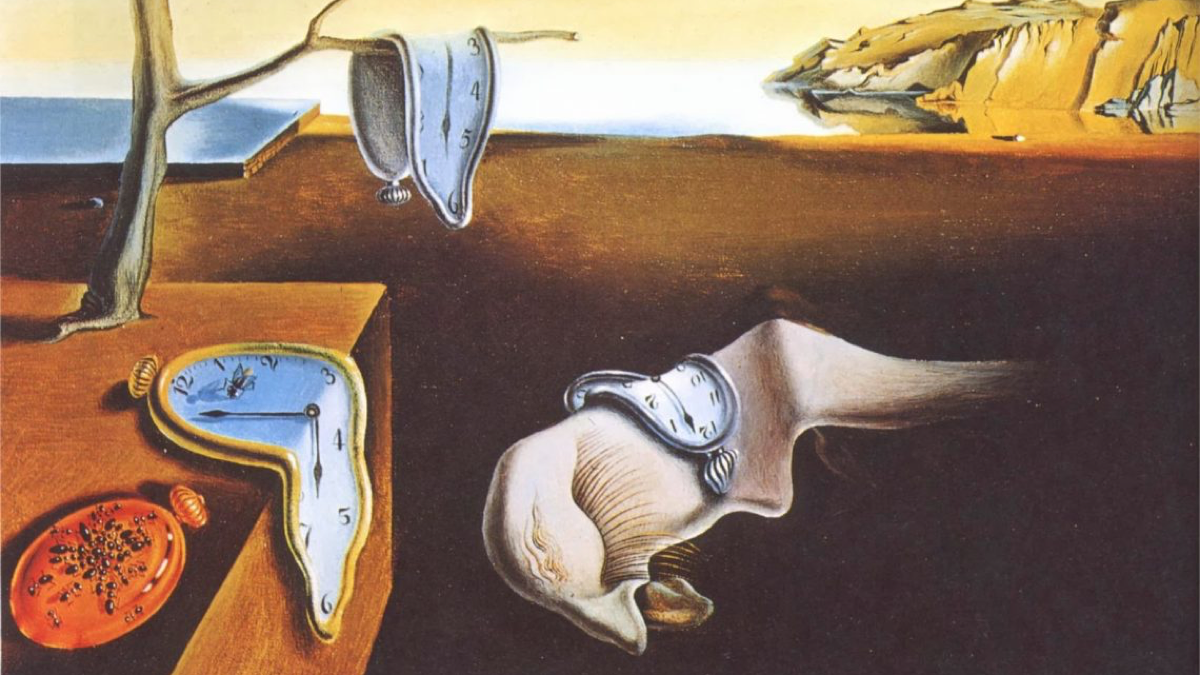
2. René Magritte – The Son of Man (1964)
This enigmatic painting by Magritte features a man in a suit with his face obscured by a floating green apple. It plays with the idea of concealment and identity, challenging viewers to question what lies beneath the surface.
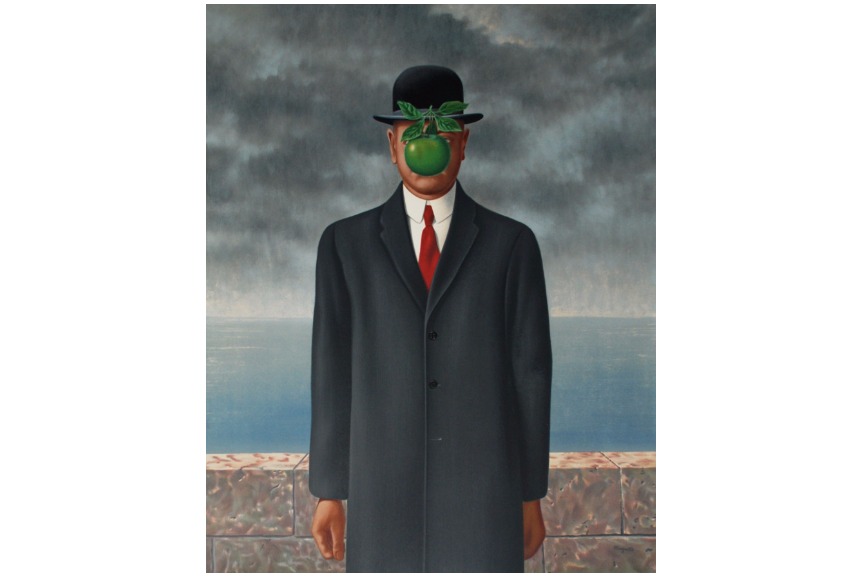
3. Max Ernst – The Elephant Celebes (1921)
This painting combines mechanical and organic forms to create a bizarre, otherworldly scene. The central figure, resembling an elephant-like machine, reflects Ernst’s interest in combining disparate elements to spark curiosity and unease.
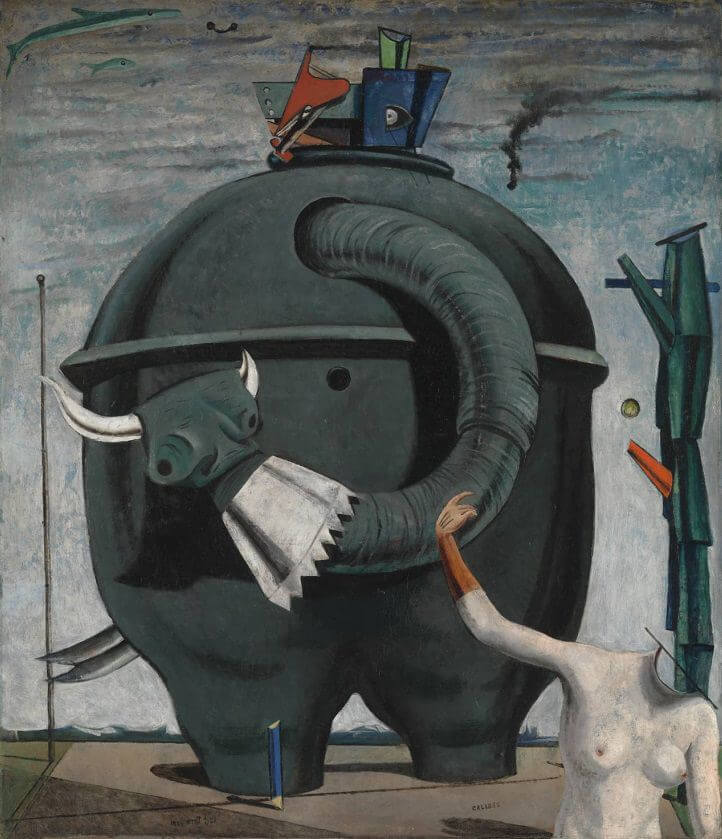
4. Leonora Carrington – Self-Portrait (The White Horse Inn) (1937–1938)
Carrington’s self-portrait features surreal symbols like a hyena and a rocking horse floating mid-air. Her work often explores themes of femininity, mysticism, and personal identity, making her a key figure in the movement.
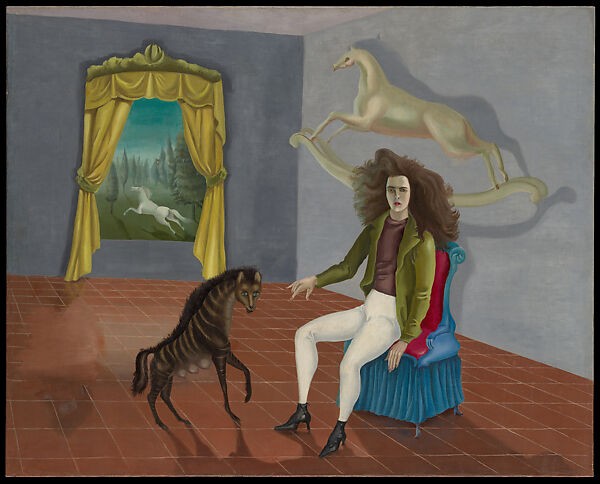
5. Yves Tanguy – Mama, Papa is Wounded! (1927)
Tanguy’s surreal landscapes feature strange, biomorphic shapes in desolate settings. This work creates an eerie, dreamlike atmosphere, inviting the viewer to interpret its ambiguous forms and title.
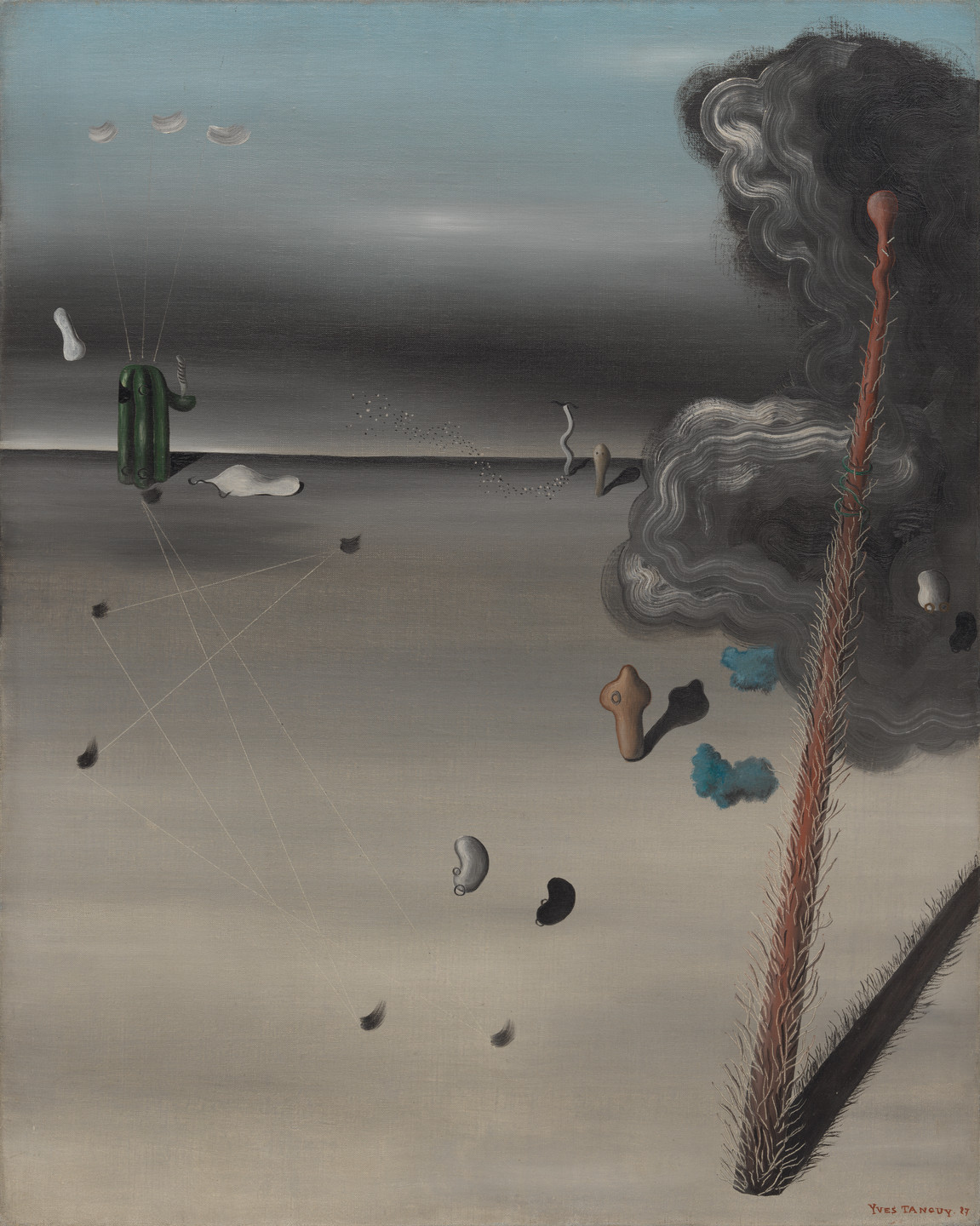
How Did Surrealists Create Their Art?
- Automatic Drawing and Writing
Surrealists used automatic techniques to bypass conscious control, allowing the subconscious to guide their hand or pen. - Collage and Assemblage
Artists like Max Ernst combined unrelated images or objects to create unexpected juxtapositions. - Dream Analysis
Inspired by Freud, surrealists incorporated dream imagery to explore the mysteries of the mind. - Photographic Techniques
Man Ray and other surrealist photographers used techniques like solarisation to distort reality.
Why Is Surrealism Still Relevant Today?
- Expanding Creativity: Surrealism encourages artists to think beyond conventional boundaries and tap into their imagination.
- Cultural Impact: The movement has influenced everything from film (e.g., Eraserhead by David Lynch) to fashion and advertising.
- Exploration of the Mind: By delving into the subconscious, surrealism connects with universal human experiences of dreams and imagination.
Further Reading
- MoMA – Surrealism
- The Tate – What Is Surrealism?
- Khan Academy – Introduction to Surrealism
- The Met – Surrealist Art
Surrealism invites us to embrace the unexpected, the bizarre, and the imaginative. From Dalí’s melting clocks to Carrington’s mystical self-portraits, this movement reminds us that art can transcend reality and explore the limitless possibilities of the mind. For budding artists, surrealism offers a creative space where anything—and everything—is possible.
If you would like to receive a roundup of all of our blog posts once a week to keep you inspired in your inbox, why not sign up to our newsletter. You can access our sign up at the top of our page. If you are a London Art College student and you would like your artwork featured here, drop us a line at any time.

